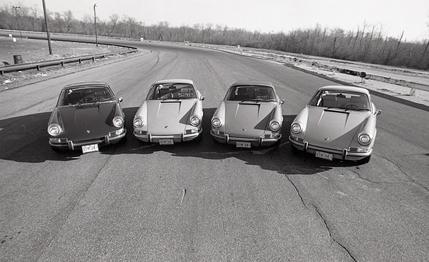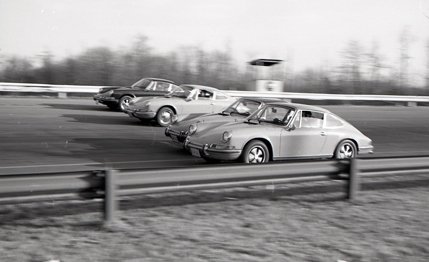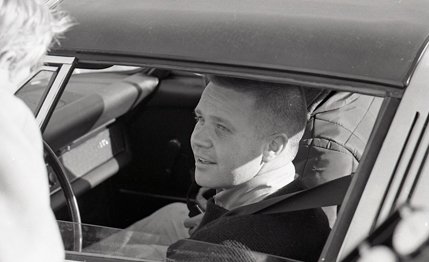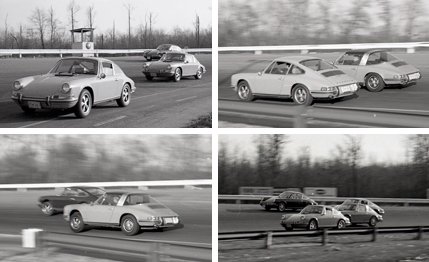 Archived Comparison
Archived Comparison
Face it. This is the Age of Protest. And when you want to register your protest against the impersonalism of dumb cars, burning your driver's license on the steps of the new GM building isn't your best bet. First of all, no one at GM is going to give much of a damn, and, once you've made the Grand Gesture, the only way to get back home is to take a subway—no matter how much you hate those dumb four door sedans with 6-cylinder engines and 2-speed automatics, eternally condemning yourself to the IRT isn't the plan.
It's much simpler and a hell of a lot more satisfying to buy a car that will do your protesting for you. And if there's any car that defies Detroit's sacred cows it's a Porsche. Small displacement, rear-engined, air-cooled, independently suspended, demanding and not prone to easily forgive errors, the Porsche is the antithesis of Detroit's engineering and marketing tenets. And, of course, there is the reputation thing. Porsches are arrogant. Only the fact that it has four wheels makes a Porsche a "car." It is a trip, it is an expression of understanding what the world is really like, it is a teutonic NASA mobile miniaturized for the highway. Porsche knows; Porsche cares; Porsche lives.

How else to react, then, when it came to our attention that the new Porsches featured such exotic hardware as fuel injection and hydropneumatic suspension, than to ablute, crawl into our testers' habits and—with pure heart—stand back and take a good long look at the entire Porsche model lineup to see if what has come to be known as the "Porsche Aura" (something like the Northern Lights) is justified or if it's just a glow that hides what otherwise might be a pumpkin coach.
Since we wanted to find out whether Porsche really has the answer to building grand turismo cars, or whether the reputation no longer matches the product, the best way to get the facts was obviously a C/D comparison test encompassing the full line of Porsches presently offered: a 4-cylinder 912 (102-hp), a 6-cylinder 911T (125-hp), a 6-cylinder fuel injected 911E (158-hp) and the top of the line, a 6-cylinder fuel injected 911S (190-hp). We also wanted to test both current body styles, and Porsche cooperated by making a 911T Targa available. In addition, both fuel injected cars come equipped with Porsche's all-new hydropneumatic front suspension. One thing we did not get with any of the cars—and we were just as pleased not to have it—was the Sportomatic transmission. All four cars were equipped with Porsche's 5-speed manual transmission.
In tests of this kind Car and Driver has often gone to prominent racing test drivers to give us—and you—extra insight. For our Porsches we had the great good fortune to sign Mark Donohue. Donohue's success as a driver (two-time U.S.R.R.C. champion, championship Trans-Am sedan driver in 1968, and twice runner-up in the Can-Am series) tends to overshadow his engineering background. But Mark not only drives a wide variety of race cars, he is in charge of building and testing them for Roger Penske Racing.

Donohue's credentials made him a logical choice, but we received an unexpected bonus when Mark revealed that, even though he was surrounded by a swarm of Porsches every time he showed up for a Trans-Am, he could only remember driving two of the 912/11 series cars in the past five years—and both times they were just short drives on public roads in cars owned by friends. Obviously, we didn't have to worry about Donohue being prejudiced one way or the other, and with his engineering background there was zero chance that a mere reputation would influence his evaluation. Engineers, even engineers like Mark Donohue, demand proof, not personal opinions.
Due to New York's unpredictable winter weather, the decision was made to carry out the road course portion of the test in more favorable climes. And while it's not exactly in the Torrid Zone, Marlboro Raceway in Maryland was the choice. In this way we would be able to get experience driving the cars through New York's incredible traffic snarl, then evaluate the long-distance cruising capabilities on the trip down to Marlboro, and finally we could wring the four cars out at Marlboro—a tight, rough-surfaced, 1.8-mile course that definitely puts a premium on handling rather than foot-to-the-wood speed.
On the way down we also made a stop at Cecil Country Dragoway where the weight of each car could be determined and the acceleration and braking tests could be performed with absolute accuracy.

The Porsches may have felt out of place on a drag strip, but steaming through traffic, running down the coast, a few dozen quarter miles and time in on a race course is a good way to look at a car inside and out. As matters turned out, we were even able to put the cars to the test through a wild variety of weather conditions. As we left New York the temperature was an ear-cracking 7° and all major highways were covered with a treacherous mixture of fresh snow, slush, salt and ice.
After slogging through this sorry mess, even the most adamant anti-Porsche Detroit Corporation man would be willing to admit that if the cars came through the rest of the tests with the same marks he scored in this impromptu torture test, he might be won over.